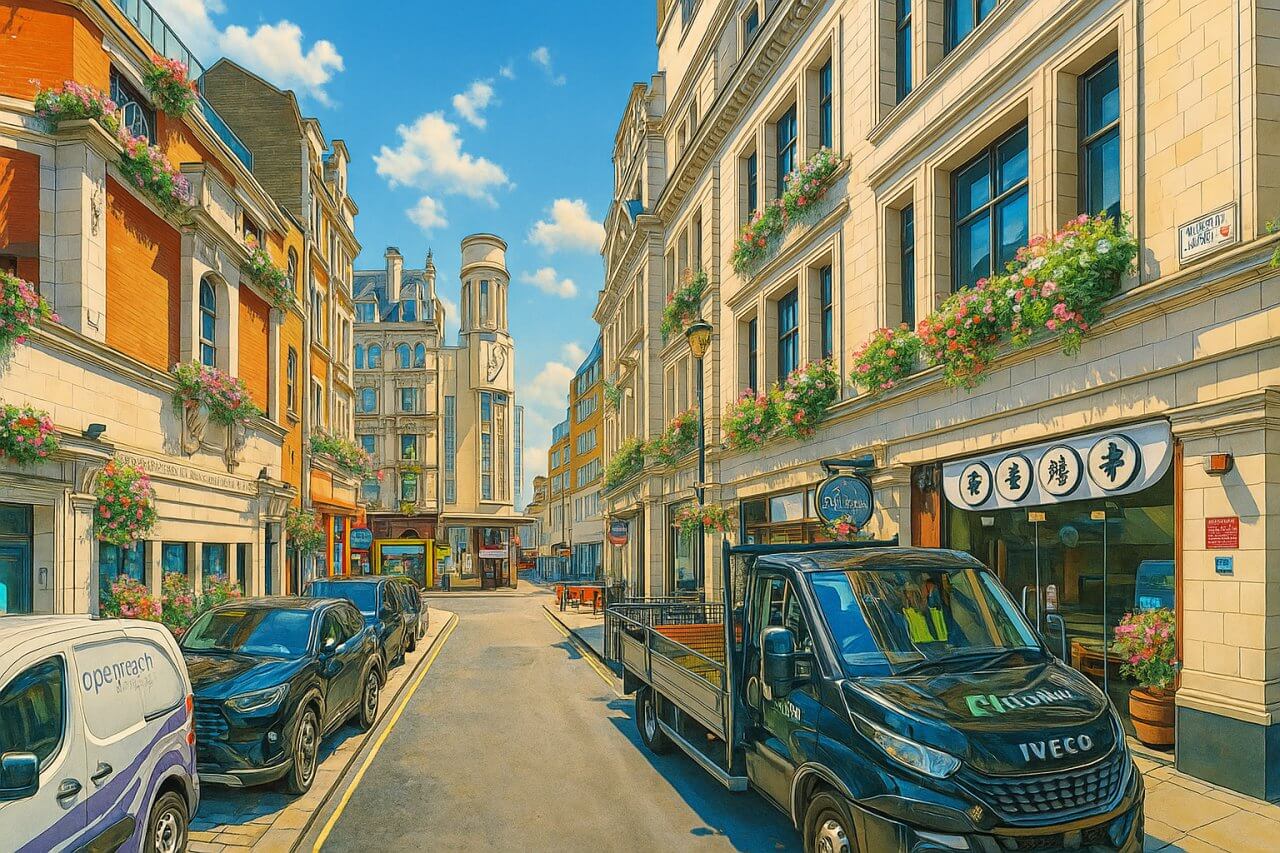
Rupert Street, London
Rupert Street is a short but historic thoroughfare in the City of Westminster, situated in the heart of London’s West End. It connects Brewer Street in the north to Coventry Street in the south and is bisected by Shaftesbury Avenue, placing it within walking distance of numerous iconic theatres and cultural landmarks.
Street Layout and Surroundings
Rupert Street is roughly 250 metres long, with a cobblestone pedestrianised section north of Shaftesbury Avenue. This pedestrian area is particularly atmospheric, offering a sense of historic charm and a quiet respite from nearby traffic-heavy roads. South of Shaftesbury Avenue, Rupert Street accommodates vehicular traffic and flows directly into Coventry Street, which leads toward Piccadilly Circus Station.
Surrounding streets include the bustling Brewer Street to the north—known for its restaurants and Soho nightlife—and Coventry Street to the south, which acts as a key connector to Leicester Square and Piccadilly. The intersection with Shaftesbury Avenue places Rupert Street at the epicentre of theatreland.
Streets connected to Rupert Street
History and Origins
Rupert Street was first laid out in the late 17th century as part of the urban expansion of Westminster. The street was named after Prince Rupert of the Rhine (1619–1682), a noted Royalist commander during the English Civil War and a nephew of King Charles I. Prince Rupert had a reputation for both military daring and scientific experimentation, and his name was often used to signify loyalty to the monarchy following the Restoration period.
The street developed alongside the broader transformation of Soho from rural fields into a lively residential and commercial district. It gradually absorbed the character of the evolving entertainment and nightlife hub that Soho is known for today.
Nearby Attractions and Landmarks
Rupert Street is ideally placed for exploring some of London’s top attractions:
- Chinatown – Just around the corner, Rupert Street runs parallel to Gerrard Street, the heart of London’s Chinatown.
- Piccadilly Circus – One of London’s most iconic public spaces, located just south via Coventry Street.
- Soho Theatre and Prince Edward Theatre – Both are within easy walking distance for lovers of live performances.
- Soho’s restaurants and nightlife – Rupert Street is surrounded by bars, clubs, and eateries, making it a hotspot after dark.
Residential Properties and Real Estate
Residential real estate on Rupert Street is rare due to its commercial focus, but some upper-floor flats do exist. These are typically compact one- or two-bedroom units, averaging around 500 to 800 sq ft (46–74 sq m). As of mid-2025, purchase prices for flats in the area range from £850,000 to £1.2 million depending on size and condition.
Rental prices are equally steep due to the central location, with one-bedroom apartments renting for around £3,200 per month, and two-bedroom units reaching up to £4,500 monthly. Compared to Greater London’s average rental of £2,200/month for similar-sized flats1, Rupert Street's values are significantly higher, reflecting the prestige and convenience of the West End.
Transport Connections
Nearest London Underground Stations
- Piccadilly Circus Station (Bakerloo and Piccadilly lines) – Approx. 2-minute walk to the south.
- Leicester Square Station (Northern and Piccadilly lines) – Approx. 5-minute walk to the east.
- Charing Cross Station (Bakerloo and Northern lines, plus National Rail) – Roughly 10 minutes on foot to the southeast.
London Underground Stations Nearby
These stations provide fast access to other parts of the capital, including the City, King’s Cross, and Heathrow Airport via the Piccadilly line.
Local Bus Stops
The nearest bus stops are located along Shaftesbury Avenue and Coventry Street. Routes include the 14, 19, 38, and N19 night bus, offering direct access to key destinations such as Marble Arch, Camden Town, and Battersea.
Fun Fact
In the early 20th century, Rupert Street became known for its informal role as a social meeting spot for London’s LGBTQ+ community, particularly before more open venues were established. This tradition contributed to Soho's reputation as a historically inclusive and diverse neighbourhood.
Quick Facts
- Location: City of Westminster, London
- Connects: Brewer Street (north) to Coventry Street (south)
- Intersection: Shaftesbury Avenue
- Surface: Cobbled and pedestrianised north of Shaftesbury Avenue
- Nearest Underground Stations: Piccadilly Circus, Leicester Square, Charing Cross
- Nearby Attractions: Chinatown, Piccadilly Circus, Soho theatres, Leicester Square
- History: Named after Prince Rupert of the Rhine; established in the 17th century
- Real Estate (2025): Flats average 500–800 sq ft (46–74 sq m); sale prices £850,000–£1.2 million; rentals from £3,200–£4,500/month
- Bus Routes: 14, 19, 38, N19 nearby
- Fun Fact: Historically associated with early LGBTQ+ social life in Soho
References
Map of Rupert Street, London
 Painting of Rupert Street, London
Painting of Rupert Street, London